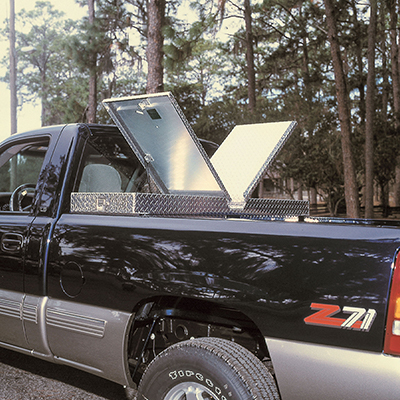How to Use a Ratchet Strap

Last updated September 7, 2023
Ratcheting straps, also called tie-down straps, are highly helpful when transporting cargo in a vehicle. The ratchets allow you to make sure the ratchet straps are taut and the items are tied down securely to a roof rack, truck bed or elsewhere. This guide shows you how to use ratcheting straps for safe cargo management.
Difficulty:
Beginner
Duration:
Under 2 hours
Table of Contents
Ratcheting Strap Basics
How to Set Up a Ratchet Strap
How to Tighten a Ratchet Strap
How to Release a Ratchet Strap
Ratcheting Strap Basics
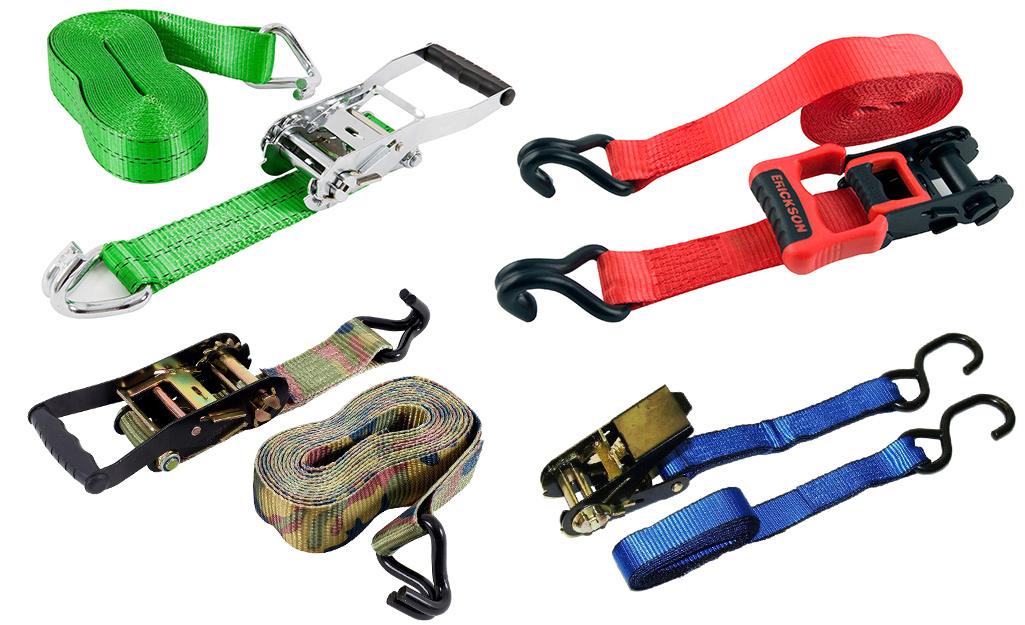
- Ratcheting straps are usually made of polyester webbing, which has a low stretch rate. This material also resists scratches.
- In addition to the ratchet housing, tie-down straps usually include hooks, rings or other connectors and accessories for different attachment needs. For example, some are designed to hook to a built-in attachment point in a cargo carrier or in the bed of a truck. Select a ratchet strap and accessories based on its intended use.
- Inspect straps before use, especially ones with older polyester. Replace straps that appear torn, frayed or mildewed. If your ratchet straps are showing wear and tear, it’s time to buy new ones.
- Before tying down your cargo, check the load limits of the ratchet straps. Different sizes and types of tie-down straps have specific break strengths and working load limits. Be sure to match the appropriate strap to the cargo or gear. If the item is too heavy and exceeds the load limit, the strap may fail. Some of the most common ratchet straps are the 2-inch size.
- Be aware of the weight limits of your vehicle, cargo carrier or roof rack as you prepare to load the cargo. Putting too much weight in a truck bed or other vehicle can damage it. An overloaded truck or car is also harder to control, making you more likely to get in a wreck.
- Check the owner’s manual to find the specific weight limit your car or truck can carry. Remember the total capacity includes the weight of passengers and fuel, not just cargo.
Tip: If the strap has not been used in a long time, a light spray of penetrating oil can ensure the parts move more smoothly.
How to Set Up a Ratchet Strap
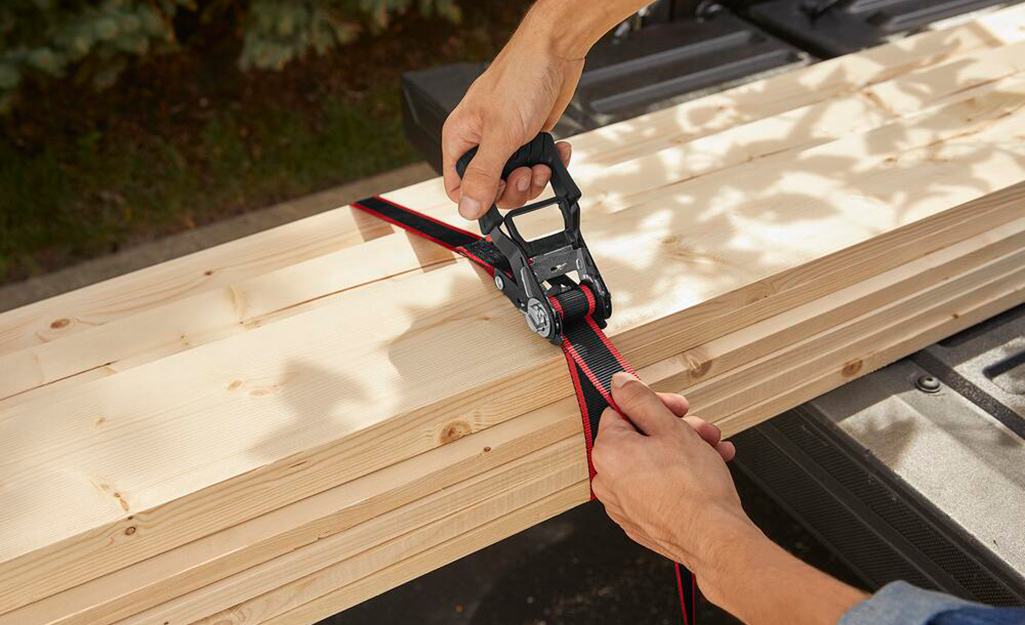
Check the ratcheting strap instructions for the unit, if possible, to learn how to use ratchet straps. Some straps have different configurations.
- Loosely place the strap around the cargo. Check the strap to make sure it’s not twisted.
- Open the ratchet to access the take-up spool (or axle). You may need to open the ratchet by pressing the release lever, or release catch, which is usually a small handle near the top of the ratchet.
- Feed one end of the strap into the ratchet housing’s lower slot, called a mandrel, leading into the take-up spool.
- Pull the strap through the mandrel until taut, leaving only a few inches of slack. The ratchet will fully tighten the strap.
How to Tighten a Ratchet Strap
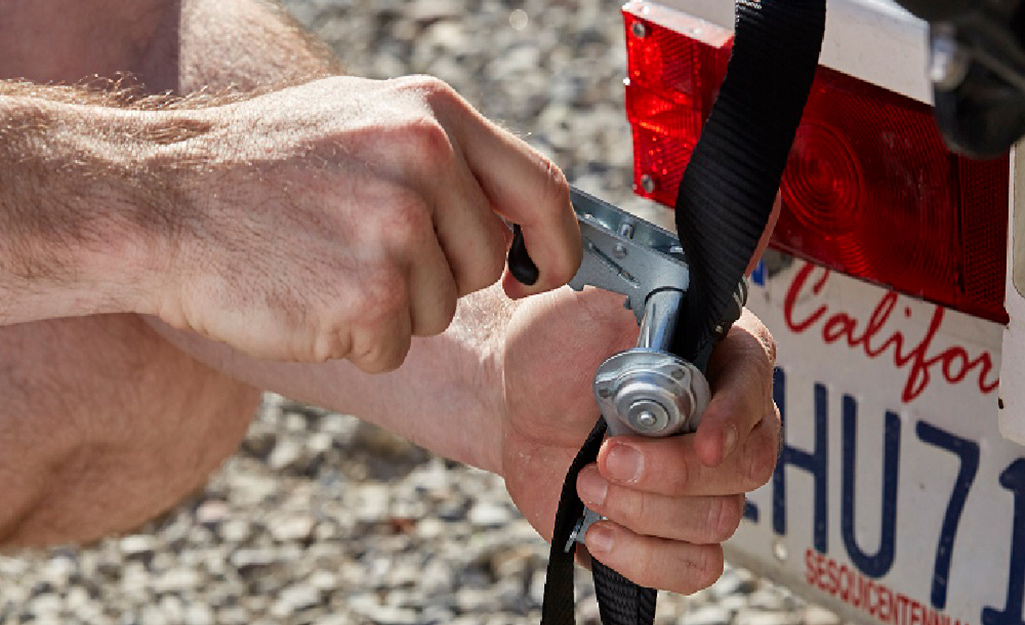
- Connect the strap hooks to the vehicle’s attachment points.
- Check to make sure the strap is laying flat and securely placed around the cargo so it doesn’t shift during transport.
- Move the ratchet lever up and down in a pumping motion until it reaches the right tension. The ratchet turns the spool, which draws the strap more tightly. Do not over-tighten.
- Lock the ratchet in its closed position.
- When securing items to roof racks, consider tying down the loose ends of straps so they don’t flap while in transit.
As you transport the load, be sure to stop and check the straps periodically to make sure the cargo has not shifted, especially after crossing speed bumps or uneven terrain.
How to Release a Ratchet Strap
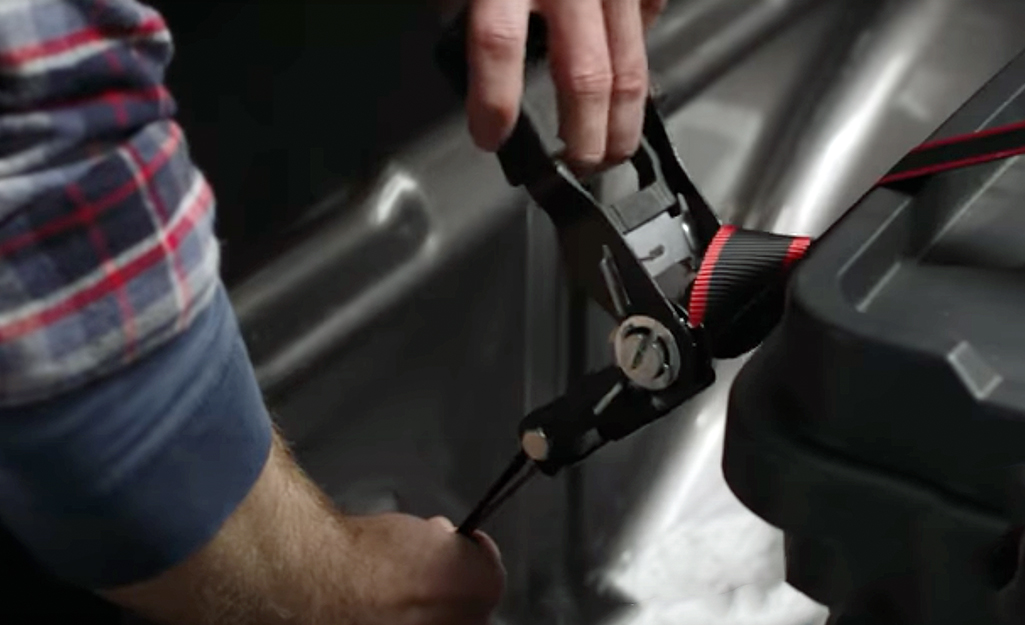
- Pull and hold the release lever or release tab when you’re ready to remove the strap and unload the cargo.
- Open the ratchet fully so it lays flat, releasing the pressure on the strap.
- Pull the strap free.
- Close and lock the ratchet buckle while not in use.
Storing ratchet straps properly is important. Wrap the strap around its buckle. Use a rubber band to hold the wrapped strap in place. Keep your ratchet straps in a dry place out of the sun. Moisture and ultraviolet light can weaken the strap over time. Ratchet straps in good condition will make it easier to release them.
Knowing how to use ratchet straps can make it easier to secure large items when it’s time to move them. Using tie-down straps correctly helps you transport cargo safely. All ratcheting straps are not created equally, so take some time to select the ones that are right for the load you plan to move.
Looking for the right ratchet straps for the cargo you need to move? The Home Depot delivers online orders when and where you need them.

